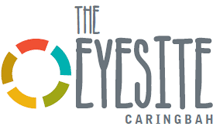Dry Eye
Dry eye is a chronic condition affecting the tear film that keeps our eyes moist and lubricated. With the increase in computer and screen usage, the prevalence of dry eye has been increasing and currently affects around 4 million Australians.
If our eyes are dry, does this just mean it needs more water?
No. Our tears are not just water, they are made up of three unique layers each with its own role.
The oily layer: This functions to prevent our tears from evaporating and is produced by special glands located in our eyelids called meibomian glands.
The aqueous layer: Most of our tear film is made up of this water layer, produced by the lacrimal gland.
The mucous layer: This is the anchor that allows our tears to adhere to the front surface of our eyes.
For a healthy tear film that allows for comfortable and clear eyes, this involves many different muscles, nerves, glands and drainage systems. If one of these components is not functioning properly, the imbalance can cause dry eye disease. =
Why can’t we just use generic eye drops to wet our eyes?
It is important to choose the correct type of eye drop, as not all types of dry eye are the same so not all treatments should be! Even if generic drops may be improving your symptoms, they are likely not treating the problem which can lead to disease progression. On top of that, many preservatives found in some lubricating drops can worsen dry eye symptoms.
86% of dry eye is due to improper functioning of the meibomian glands.
This means that many common drops from the pharmacy that are used that do not have this oily component can actually flush out the small amounts of oil in your tear film!
How do I know if I have dry eyes?
There are a range of symptoms that can result from having dry eyes. Some of these include:
Stinging, burning, scratching sensation in your eyes
Dry eyes
Sandy/gritty eyes
Red eyes
Watery eyes
Sensitivity to light
Tired eyes
Filmy vision that clear on blinking
Dry eye can even impact daily activities, getting in the way of reading, using a computer, watching the TV or even driving in its debilitating stages.
What causes dry eyes?
There are a large range of factors that can cause dry eye and multiple causes can often play a part in the disease.
Age, particularly those over 50 as tear production and composition changes
Gender, due to the higher risk in females as hormones, particularly androgens, impact the ocular surface
Computer use can reduce blinking or cause incomplete blinks contributing to dry eye
Environment factors particularly low humidity and high wind velocity e.g. office spaces, air-
conditioned environments and on aeroplanes.
Medications including antihistamines, diuretics and beta blockers
Ocular conditions including blepharitis, ocular rosacea, recurrent chalazions
Systemic conditions
Contact lens use
Refractive surgery
So I think I have dry eye, what next?
Book in an appointment at our clinic for a dry eye assessment where a diagnosis of the severity and type of dry eye can be determined. After establishing a clinical picture that factors in your symptoms, signs, history and lifestyle we will create a dry eye management plan specific to you.
Prior to starting treatment, we will provide a questionnaire which will be used to track improvement.
What are the treatment options?
Following assessment, we will start your individual treatment regime that can include:
Eye drops: depending on the type of dry eye you may have, using the correct drop can drastically improve symptoms.
Medication: some types of dry eye have an inflammatory component to the cause and in these cases prescription medication may be necessary to improve eyelid secretions
Eyelid care: lid hygiene is extremely important, particularly if blepharitis is concurrent and involves lid scrubs, wipes, washes or warm compresses.
Nutrition: omega 3 has been shown to improve symptoms of dry eye. This may be incorporated into your diet or can be taken in the form of supplements.
Blephasteam
The blephasteam is a device used to warm the eyelids using heat and moisture therapy to improve proper oil production in meibomian gland dysfunction. It has been scientifically proven to improve tear quality, decrease tear evaporation and improve vision. It has also been shown to alleviate symptoms in meibomian gland dysfunction as well as other associated ocular conditions like posterior blepharitis, meibomitis, ocular rosacea, chalazion and contact lens intolerance.
The goal for treatment is to alleviate symptoms and have patients functioning in their everyday lives without the interference of uncomfortable and dry eyes. Following an improvement, it is important to continue the management of our eyes for long term maintenance. Like brushing our teeth, our eyelids need to be routinely cared for and checked upon for our eyes to feel comfortable.
References
Available soon

